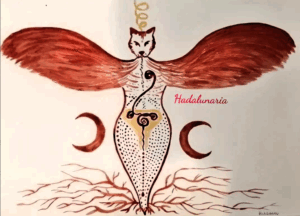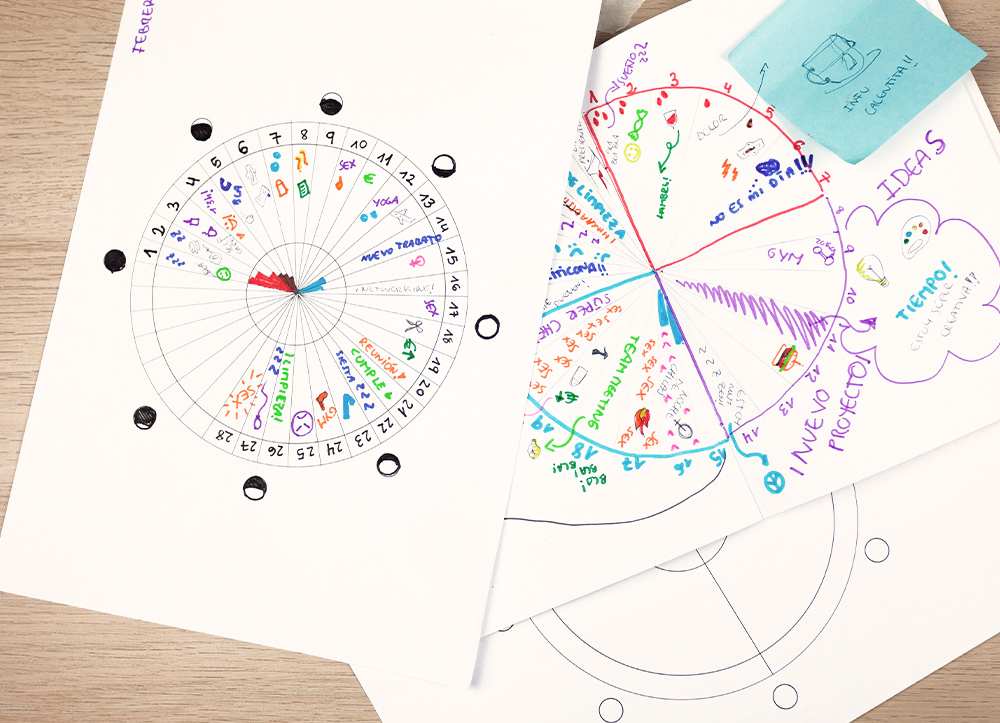Menstrual bleeding

Uses of menstrual blood

So, at first this may sound a little strange to you, but the truth is that menstrual blood can be used, especially if we have collected it with the menstrual cup or disc or through free bleeding.
- Menstrual art: consists of using menstrual blood to paint pictures, make drawings and other forms of art.
- Watering plants: Menstrual blood contains endometrial stem cells, lipids, proteins, hormones such as progesterone, as well as phosphorus, nitrogen and potassium and can act as a fertilizer for plants. It is recommended to dilute a menstrual cup (20ml) in a liter of water and stir the contents until a homogeneous mixture is achieved.
- Tinctures and masks for hair and skin: Yes, menstrual blood is also used to nourish hair and skin. In the case of hair, it can be applied especially to the tip area after normal washing and with hair still damp. Leave it on for a few minutes and then rinse with plenty of water. For the facial mask, the blood is diluted with a little water and applied to the face, allowing it to dry and harden for a few minutes, after which it is removed and rinsed.
Attention! Just as our endometrium contains stem cells and a ton of beneficial nutrients, it can also harbor toxins that we accumulate in our daily lives. Therefore, we must be aware of this and always use blood safely, knowing that the healthier our lifestyle, the higher quality we will find in our menstrual blood and that, on the contrary, the less healthy it is, the more toxic it is. will be present in our blood.
- Perform rituals: each person can give their blood the symbolic value they consider and can use their blood as an offering in rituals or as an element of power.
On the other hand, there are very powerful self-knowledge tools to discover and discover ourselves in the different phases of the menstrual cycle. One of them is the cyclogram , menstrual diagram or lunar diagram, it is a tool for menstrual self-knowledge that, after having been carried out for at least 3 cycles in a row, can offer reliable information to establish analysis patterns. It helps to have a better knowledge of our physical, emotional, spiritual states, etc.

The days of the calendar are usually noted in the first circumference. In the second circumference, the days of the menstrual cycle are noted (starting with the first day of bleeding). In the rest of the spaces, information is noted about cervical mucus and basal temperature, if this is taken, as well as any other question that we wish to analyze its pattern:
- Physical body: breasts, belly, urination, stools, pain, sleep, etc.
- Mental body: visual/spatial capacity, concentration, language, etc.
- Emotional body: sadness, joy, anxiety, irritability, rejection, etc.
- Spiritual body: values, intuition, meditative state, consciousness, etc.
- Sexuality: sexual desire, autoeroticism, orgasm, etc.
- Creativity: new projects, fluidity, ideas, process and results, etc.
- Food: menu of the day, cravings, appetite, favorite flavors, etc.
- Energy: tiredness, physical activity, sport, etc.
- Sociability: level of sociability, dates, calls, messages, etc.
It should also be remembered that menstruation is considered a health indicator that confirms that our body is functioning properly at various levels. Observing its color and consistency can also give us a lot of information about what is happening in the body:

Fuente: ConSalud.es
- Light red or pink: this color occurs during the first day or days of menstruation, when bleeding is less. If this color lasts throughout the cycle it may be a hormonal alteration, so it should be treated in gynecology. It may also be the effect of hormonal contraceptives. It may be a symptom of the onset of menopause.
Intense red: this color is typical of the third or second day of menstruation. It indicates that it is a recent bleeding and contains the newly desquamated blood vessels of the endometrium. Its consistency is liquid and its color is bright. - Pale pink or white: if the blood is very clear or watery, it may indicate a lack of nutrients or iron. It is recommended to consult a gynecologist. This is easily observed with the menstrual cup.
- Brown: this is the bleeding typical of the last days of menstruation. The brownish color indicates that the blood is older, as it took longer to be expelled from the endometrium. Early menses may also tend to have this color. If any yellowish tinge or unpleasant odor is observed, it may also be a sign of infection.
- Gray: the grayish color, along with some reddish thread, may indicate the presence of a Sexually Transmitted Infection / Genital (STI / GTI). In case of pregnancy, it could be a miscarriage. In both cases it is advisable to consult a gynecologist.
Finally, we must not forget that menstruation is a biopsychosocial and spiritual phenomenon and menstruating in one area of the world is not the same as in others. There are cultures that greatly demonize menstruation and consider it something impure. For example, in some areas of India it is prohibited to enter temples while menstruating. However, other cultures consider menstruation as something to celebrate. For example, in other areas of India, rituals are performed for the girl who menstruates for the first time and she is presented with a sari.
In the same way that girls or people with a vulva experience menarche as a rite of passage towards the process of transition to adolescence and adulthood, boys and people with a penis experience spermachi .
